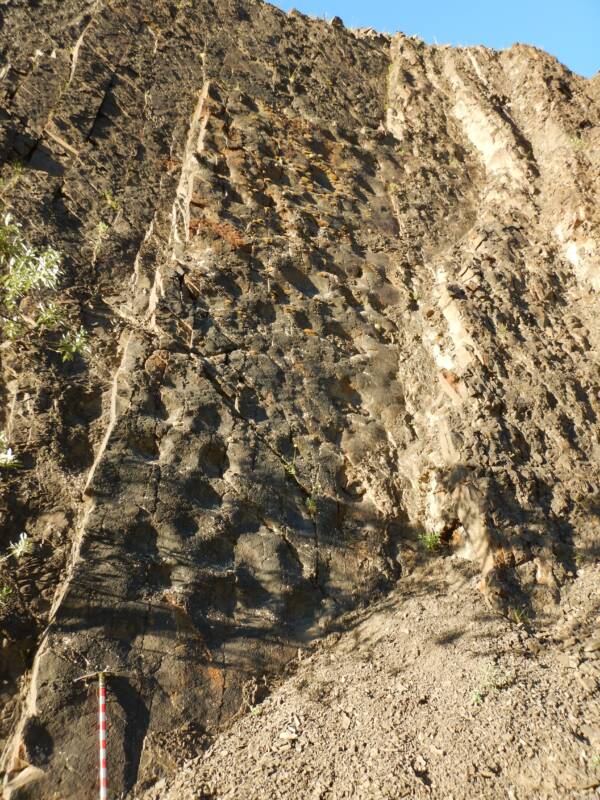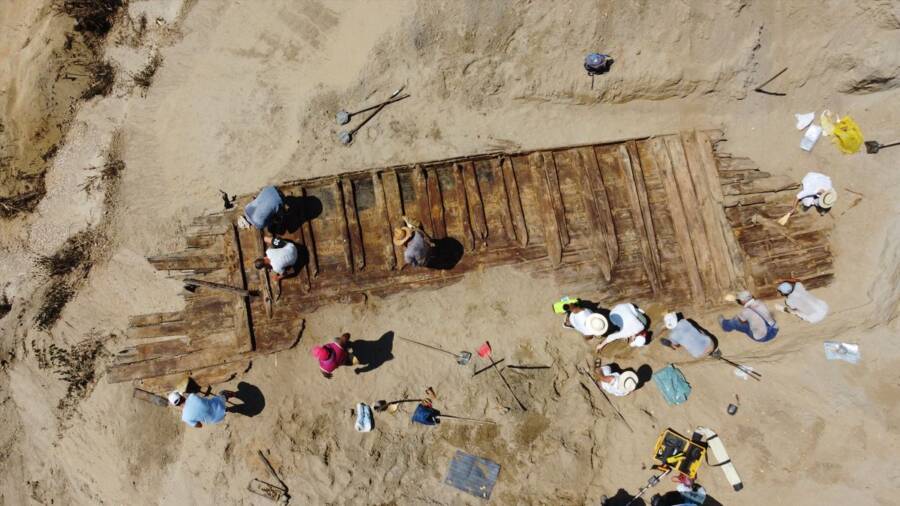Dinosaur footprints found on an Alaskan cliff, tears of blood discovered on Vlad the Impaler's letters, ancient Roman ship unearthed in Serbia.
Paleontologists Uncover A Remote Cliff In Alaska That’s Covered In 70-Million-Year-Old Dinosaur Footprints

Patrick DruckenmillerThe largest-known collection of dinosaur tracks in Alaska, this site has been dubbed “The Coliseum.”
Known today as one of North America’s greatest nature preserves, Alaska’s Denali National Park is famous for its vast mountains, pristine lakes, and abundant wildlife including titans like 1,500-pound moose and ten-foot-tall Kodiak bears, the largest on Earth. But some 70 million years ago, this area was dominated by even larger fauna: dinosaurs ranging from horned and duck-billed herbivores to lethal predators like raptors and tyrannosaurs. During the Late Cretaceous Period, the region was a vast flood plain that was “teeming with dinosaurs,” then tectonic shifts turned this flat landscape into the mountainous area it is today.
Now, paleontologists in Denali have uncovered a remote rock face that reveals the footprints of just a few of the giants who once walked this terrain. Dubbed “The Coliseum,” this massive cliffside the size of one and a half football fields is marked by footprints from dozens of dinosaurs who once inhabited the area.
Read on here.
Analysis Of Vlad The Impaler’s Letters Suggests That He May Have Cried Tears Of Blood

Analytical ChemistryThe top image shows Vlad the Impaler’s original letter with ethylene-vinyl acetate strips applied to capture any biological material. The bottom image shows the letter under flash UV illumination.
Ever since Bram Stoker published his classic novel Dracula in 1897, there has been speculation that the vampire was inspired by Vlad the Impaler, the notoriously brutal 15th-century ruler of Wallachia. The debate about whether or not Stoker truly based his famous monster on the prince still rages on, but scientists recently discovered that Vlad had his own chilling connection to blood.
A group of researchers analyzed the proteins from letters written by Vlad the Impaler during his reign. Some of the molecules they found suggested that the prince suffered from hemolacria, a condition that causes bloody tears.
Dig deeper in this report.
Serbian Coal Miners Just Accidentally Unearthed An Ancient Roman Ship

Institute of Archaeology, BelgradeArchaeologists from the Institute of Archaeology, Belgrade working to keep the Roman ship remains damp while excavating them.
Coal miners working in Serbia recently uncovered the remains of a large wooden boat likely used by the ancient Romans to supply a nearby frontier city.
The vessel has yet to be officially dated, but archaeologists estimate that it originated sometime around the third or fourth century C.E., suggesting that it was likely used to carry supplies along small rivers near the Roman city of Viminacium, about a mile away.
See more here.





